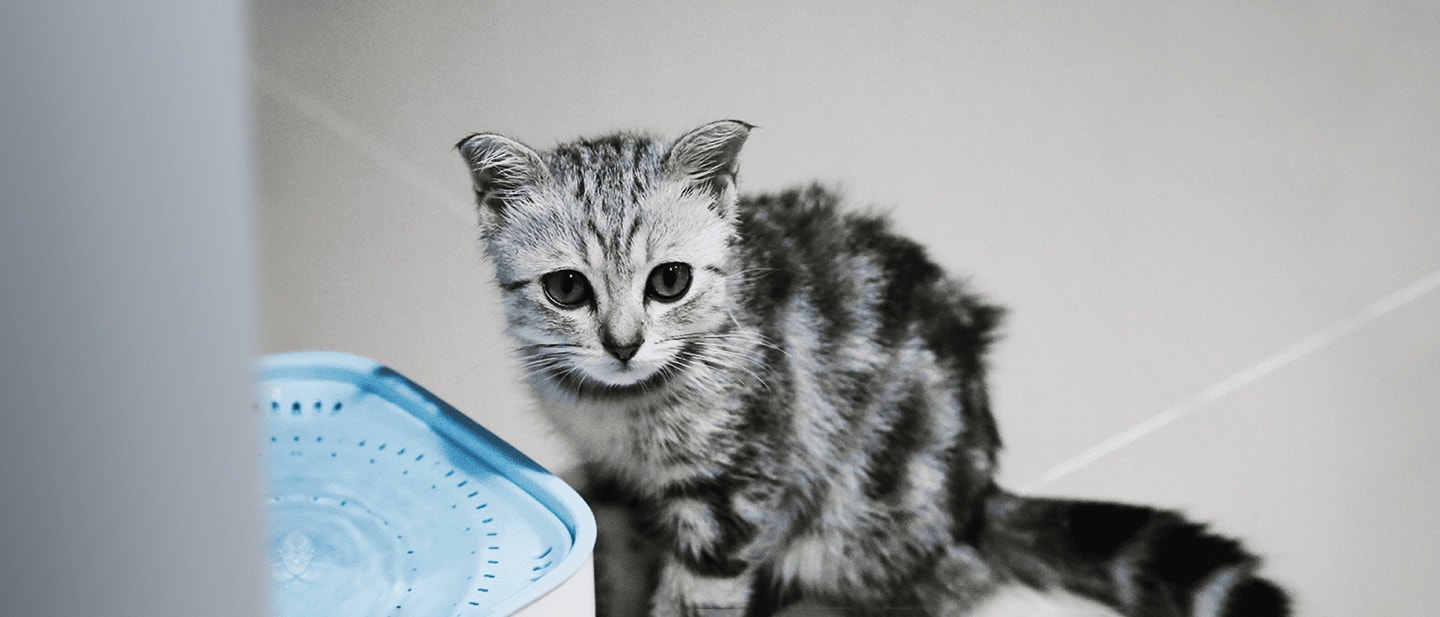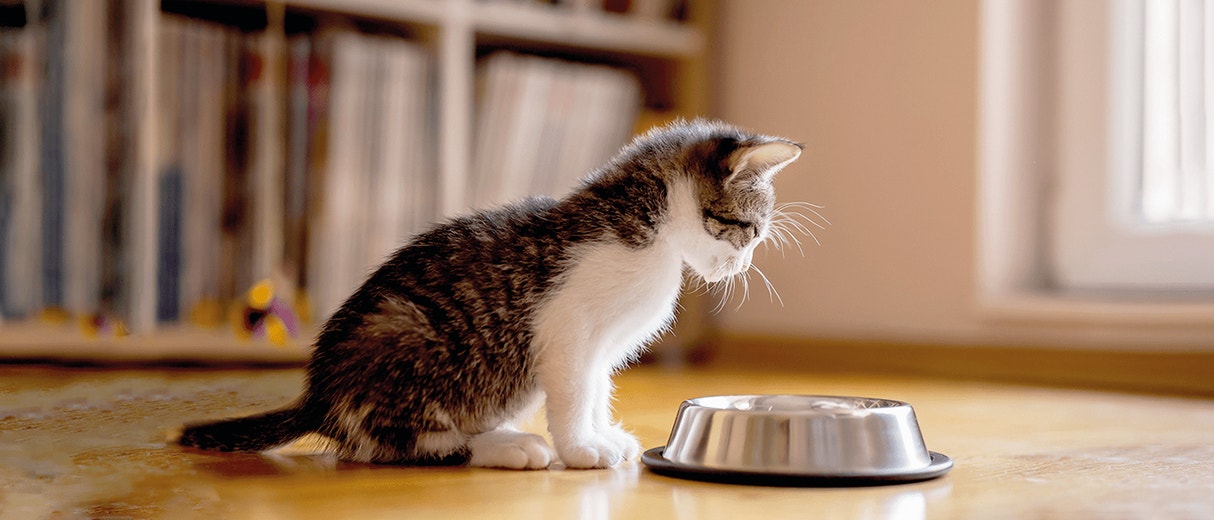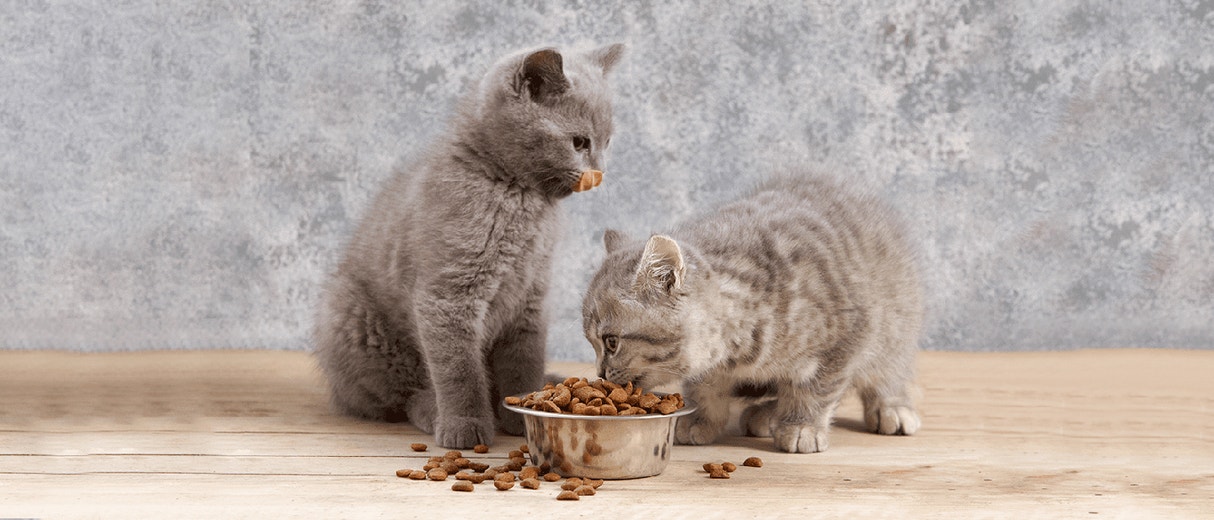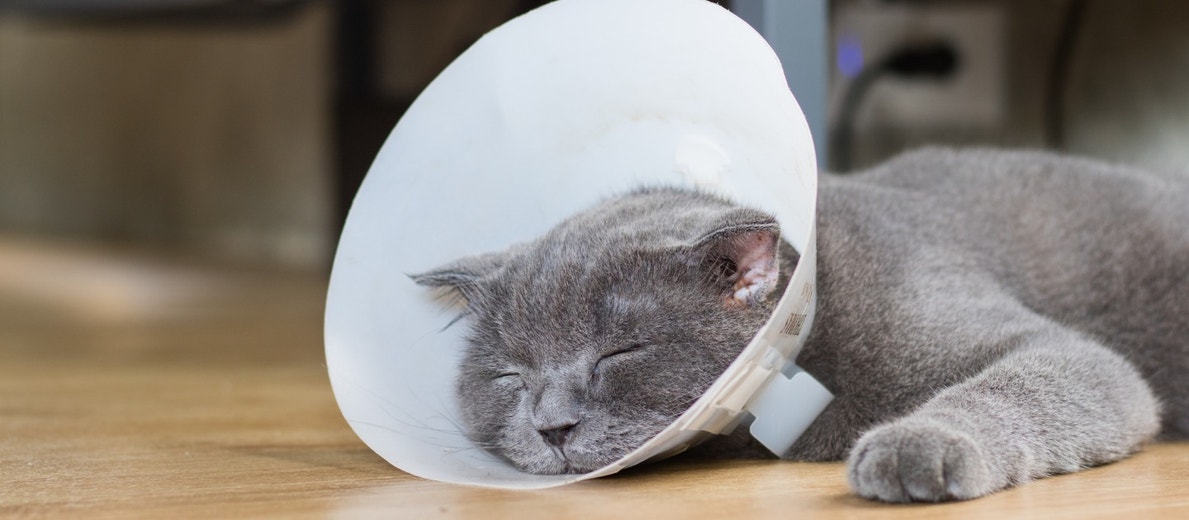
Cat Drinking Water- Tips to Keep Your Feline Hydrated
Our fabulous felines are well known for their immense love for food and general appreciation of good meals with a wide variety of flavours and textures.
Importance of Cat Drinking Water
Our fabulous felines are well known for their immense love for food and general appreciation of good meals with a wide variety of flavours and textures. However, given that furries do not share the same affinity with water, most cats end up drinking less water than they ideally should, often leading to dehydration. However, water plays an important role in a cat's everyday life, not just to maintain essential bodily functions, but also to keep up with their energetic lifestyle.
In addition to water being an essential component for regulating body temperature, and improving immunity and digestion, it also helps maintain the hydration levels in the body. Our furry mousers are nimble and agile creatures, who prefer an active lifestyle full of adventures. Having sufficient cat water helps cats in keeping their joints well lubricated, making it easier to stay physically active. It also helps in maintaining a pristine coat quality, keeping it from getting dry and brittle.
Reasons Why Your Cat May Not Be Drinking Enough Water
Ensuring your cat has sufficient hydration
A majority of our kitty friends often share an unspoken aversion to water. This can cause cats to actively avoid water for drinking from the cat fountain.
Cats can also avoid drinking cat water if they have drunk enough water to keep up their everyday adventures. So, as a cat parent, it is important to keep an eye on them, making sure they have had sufficient water to drink and are not dehydrated.
Why a clean water bowl is crucial for your cat's health
It is crucial to ensure that your cat has a clean water bowl or cat water fountain to drink from since cats are famously finicky when it comes to cleanliness.
A clean water bowl can benefit your favourite furry in several different ways. To begin with, having a clean water bowl or cat water fountain can significantly eliminate the risks of bacterial contamination if the cat drinking water bowl has been left out for a while, making sure your furry buddy does not fall ill drinking from the contaminated water. Cleaning the cat water bowl also removes debris and dust, which can otherwise mess with your pet's immune system.
The importance of choosing the right location for your cat's water bowl
Considering cats are neat freaks, it is important to take notice of where you choose to place your cat's water bowl or cat fountain. Placing the water bowl next to their litter may cause considerable discomfort in cats, discouraging them from drinking from it. Additionally, it can also raise the risks of contamination from bacteria or faecal matter that is present in the litter box. So, choosing a safe, comfortable place for the cat water dispenser or water bowl that is easily accessible by your feline friend is important.
Dental disease in cats
Cats over the age of 7 years and senior cats are often prone to the risks of dental diseases such as plaque, gingivitis and feline periodontitis, which corrode the enamel layer of their teeth and expose nerve endings that lie below. This can cause their teeth to grow significantly sensitive, leading to pain and discomfort while eating or cat drinking water. So, most cats experiencing dental disease often give up drinking sufficient water from the cat water fountain, and are exposed to the risks of dehydration.
Effects of gastrointestinal upsets in cats
Various gastrointestinal diseases in cats caused by bacterial action or consuming contaminated food can cause them to throw up frequently, accompanied by diarrhoea, nausea, and dehydration. Cats can often avoid eating or drinking properly from the cat fountain or cat water dispenser if they are suffering from gastrointestinal upsets, and may require veterinary attention.
How much water should your cat or kitten drink?
As responsible cat parents, it is important to be aware of how much is water your cat or kitten should drink on an everyday basis. So, when do kittens start drinking water? As infants, kittens do not need to drink any cat water until they are four weeks of age or more. This is because they derive all their nutrition and moisture from the colostrum produced by mama cats, and can go on without drinking any additional cat water.
If you are wondering when can kittens drink water, following four weeks of age, kittens develop rapidly with increasing physical and cognitive functions. They also lose the ability to digest lactose present in milk, making them rely on water as the primary source of hydration. Kittens up to 6 months of age must drink at least 70 ml of cat drinking water every day to maintain vital body functions.
In addition to when do kittens start drinking water, cat parents often wonder, can kittens drink water as they grow up? As cats grow older, their daily water requirement also increases. To answer whether can kittens drink water, grown kitten should drink 135 ml of water or more, while adult cats, weighing around 4 kg should ideally drink 240 ml of water from the cat fountain, or 60 ml/kg of their body weight.
Different Tips and Tricks Ways to Encourage Your Cat to Drink More Water
If you are worried that your cat won't drink water, here are some tips and tricks to encourage your furry feline to drink more:
Change the water bowl
Wondering why your cat won't drink water? Offer them water in a shallow bowl with wider sides.
You should also consider metal bowls or cat drinking fountains as they keep the water cool and fresh for a significantly longer time. Make sure to clean the water bowl at frequent intervals too.
Avoid placing the water bowl next to their food bowl
If you are worried about your kitten not drinking water, placing the water bowl away from the food bowl can encourage your kitty to drink more.
You can also try placing multiple water bowls, a cat water dispenser, or the best cat water fountain at accessible locations throughout the house.
Install a water fountain
Installing the best cat water fountain can go a long way in making sure your cat drinks enough water. Cat water fountains offer continuously running water, which is appealing to felines. So, keep you furry well-hydrated with the cat drinking fountain!
Add artificial flavouring to water
Adding artificial flavour enhancers to the cat drinking fountain or cat water dispenser can be a great way of encouraging your feline to drink more. Also drinks such as tuna water or chicken broth in the cat water dispenser can also ensure your cat stays hydrated.
Try wet cat food
Another option is to try wet cat food. Whiskas wet cat food contains a high amount of moisture that keeps your feline furball hydrated all day long!
As a delicious bonus, Whiskas wet cat foods are available in exciting flavours such as beef, sardine, salmon and gravy, packed with all essential nutrients and unmatched taste.
And now that you are equipped with all these helpful tips, you can easily make sure your fur baby has enough cat drinking water.
FAQs
-
What is spraying and marking in cats?
Male cats spraying is considered a vital part of feline communication. While most outdoor cats spray to mark territories, spraying in household cats is more instinctive. Female cat spraying and urine marking in cats are also for attracting mates.
Do cats spray when happy?
While spraying can have several connotations, it does not generally indicate happiness in cats. Cat urine spraying is usually used for urine marking in cats to indicate territories, warding off predators, and attracting potential mates when in heat.
How do I get my cat to stop spraying?
Since male cats spraying is mostly associated with non-neutered cats looking for a mate in heat, getting your cat spayed or neutered is a possible long-term solution. Additionally, veterinarians may recommend medications like Fluoxetine or Clomipramine with a high success rate.
Is cat spraying the same as peeing?
Cat parents often wonder, why do cats spray? Contrary to popular belief, cat peeing and spraying are not the same. While cat pee involves your furry relieving itself, cat spray is more intentional to communicate certain things like marking territories.
Why is my cat spraying?
Cats are known to spray for several reasons, such as cat marking their territories, warding away predators, or attracting potential mates when they are in heat. Cats under stress and anxiety are known to urine spray as well.
How can I clean my cats' teeth naturally?
You can naturally clean your cat’s teeth using dental additives in their drinking water as cat gingivitis treatment that help get rid of microbial growth and tartar accumulation. Additionally, you can also consider getting eco-friendly biodegradable bamboo toothbrushes for cats!
Do I need to brush my cat’s teeth with toothpaste?
Toothpaste for cats can be extremely beneficial in maintaining good oral health in cats. Other than preventing tooth decay, plaque build-up, and microbial actions that causes infection, feline toothpastes contain calcium, phosphates, and minerals to fortify and maintain their dental health.
Is it too late to brush my cat’s teeth?
It is never too late to brush a cat’s teeth to maintain good cat dental health. If you suspect gingivitis in cats, with symptoms such as pale gums in cats, aversion to eating and drinking, or foul breath, it is important to visit a cat dentist.
Are you supposed to brush your cat’s teeth?
Yes, cats over the age of 7 are prone to the risks of periodontal diseases and must maintain good dental health. Additionally, brushing a cat’s teeth regularly helps get rid of plaque and microbial growth, and avoid cat tooth decay.
How harmful are fleas to cats?
Fleas in cats do not usually cause mortal harm, but can often lead to severe anaemia, weakness and allergies. Furthermore, cats can be exposed to the risks of tape worms in cats, flea allergy dermatitis, and open wounds if untreated.
Are fleas killing my cat?
Although flea bites can cause significant irritation and skin injury to fur babies, they do not usually lead to life-threatening situations. However, having a flea infestation can cause cats to become anaemic, and can often prove lethal for smaller kittens.
Can humans get fleas from cats?
Although rare, but humans can still get fleas from cats. Flea bites in humans can cause blisters and lesions at the location of the bite, severe cases may also lead to open wounds, infections, and flea-borne diseases like plague and typhus.
How do you get rid of fleas on a cat?
If your furry feline has fleas, you can consider giving them a sulphur bath or using flea and tick management shampoos to get rid of fleas in cats. Regularly brushing their coat using a flea comb can also prove beneficial.
What to do if my cat is drinking too much water?
Cats drinking unusually high amounts of cat water call for professional attention as it often indicates diabetes or hyperthyroidism. So, if your cat is drinking way too much cat water than necessary, it might be time for you to consult a veterinarian.
Which is the best way to give water to a cat?
While a shallow bowl with wider sides is the easiest and most common way of serving water to cats, having the best cat water fountain that offers continuous and clean, fresh running water can also encourage fur babies to drink more.
How to give water to the cat?
Cats prefer drinking from a water bowl or pail that is clean and shallow, and has wider sides. Additionally, having the best cat water fountain at home that offers continuous fresh running water can also encourage your kitty to drink more.
Is it an emergency if my cat won't drink water?
Cats can avoid drinking water once they've had their daily fill. However, cat won’t drink water when they are stressed or are suffering from an underlying health disorder such as feline UTI, which might call for an emergency.
What kind of water should cats drink?
Felines can regularly drink normal tap water or filtered water without facing any health concerns. However, if you want to go the extra mile by offering bottled water to your furry munchkin, spring water should be your top preference.
Should cats be skinny?
Being lightweight helps cats to effortlessly jump to high grounds, and flexibly pass through difficult terrains. However, cats are not supposed to be too skinny which restricts them from having a normal lifestyle. Being malnourished can cause health problems too.
What is low weight for a cat?
Adult cats with weights lower than 4 kg can be considered malnourished and underweight. Underweight cats have a visibly narrow frame and must be immediately treated to avoid the risks of health concerns like parasites, bacterial diseases, and so on.
How much should a cat eat a day?
The everyday caloric intake of furry felines depends on their age, breed, and their health conditions. An average caloric intake of 250 calories is sufficient for cats with a weight of 4 to 5 kg and more for larger breeds.
What is the normal weight for a cat?
The normal weight for a cat can vary depending on its age and breed. However, the normal weight for smaller cat breeds ranges between 4 to 4.5 kg, while the ideal cat weight for larger breeds is about 11 kg.
What can I use to clean my kitten’s eyes?
Unless your furry munchkin is suffering from genuine eye problems, you might not need kitten eye care medications to clean your kitty’s eyes. Clean water and over-the-counter eye drops can be used for ensuring regular and optimal cat eye health.
Should I wash my cat’s ears?
It is unwise to wash a cat’s ears, as it may clog their ear canal or damage the eardrum. Instead, schedule designated cat ear cleaning sessions and gently clean out the eardrums with cat ear cleansers and soft cotton balls.
What can I use to clean my cat’s ears at home?
If you are cleaning your cat’s ears at home, you would need a towel, cat ear cleanser, some soft cotton balls or gauze, and cat ear cleansing wipes. Make sure to use cleansers that are designed specifically for feline use.
How can I treat my cat’s skin naturally?
Giving your cat a bath using cat shampoo is a good option for cat skin care. But if you prefer a more natural solution, spraying lemon-infused water over their haircoat also helps in keeping the coat clean and getting rid of fleas.
How do you take care of a cat’s skin?
While cats are excellent groomers themselves, proper cat skin care, such as brushing their coats regularly and bathing them on a monthly basis is also important to get rid of loose and matted fur, dirt, and dead skin cells.
Do cats need vet checkups?
It is important to take cat to vet to get them checked for any underlying health disorders. Additionally, during the kitten check up, your veterinarian may inform you about any changes in your kitty’s diet or upcoming vaccinations that might be required.
What tests do cats need yearly?
Feline leukaemia virus, feline infectious peritonitis, and feline immunodeficiency virus are some tests that might be suggested when you take cat to vet. In addition to the cat vet check up cost at the kitten check up, there may be additional charges if your cat needs tests.
How often should a cat have a health check?
Wondering when to take cat to vet? Kittens may need a veterinarian appointment every three to four weeks. Now that you know when to take newborn kittens to vet, cats over four months of age need annual check-ups. Senior cats might require veterinary appointments every six months.
How do I check if my cat is healthy?
It is important to know when to take cat to vet, by keeping an eye on them for possible symptoms of illness, such as frequent urination, diarrhoea or vomiting, change in behaviour, excessive shedding, nausea, lethargy, and loss of appetite.
How do you take care of a newborn kitten without a mother?
It is crucial to learn how to care for a kitten, how do you bathe a kitten/how to care for a stray kitten and how to feed newborn kittens without a mother. You can feed them kitten formula instead of newborn kittens milk.
How do you take care of a kitten for beginners?
Wondering how to care for newborn kittens, how do you take care of a stray kitten and how to feed newborn kittens? In addition to knowing when to bathe kittens and can I bathe my 1 month old kitten, you must look into their kitten bathing and eating habits and kitten sleeping schedules.
How much do you feed a kitten?
Wondering how to feed kittens and how to care for a kitten? Kittens require a higher caloric intake when it comes to how to feed kittens. So, what to feed newborn kittens? Kittens over 6 weeks can be fed a cup of dry cat food every day.
What is the best way to feed kittens?
Are you worried about how to care for a kitten or how to care for newborn kittens? In their infancy, kittens are completely dependent on newborn kittens milk as the source of nutrition. They gradually transition to solid food and water from newborn kittens milk.
How to get rid of worms in cats naturally?
Foods like pumpkin seeds, chamomile, coconut, carrots, and apple cider vinegar can prove to be very effective against worm infections for your cat. But it is always advisable to visit a vet for a surer treatment against worm infection.
How long does it take to get rid of worms in cats?
Worms can multiply in numbers at a rapid pace and can continue to do so even after the first dose of deworm cat medicine. Thus, the process of treatment for worm infection can last for a month to make sure not a single worm is left in your cart.
What should I do if my cats have worms?
If you suspect that your cats have worms, you should immediately take it to a vet. Administering medicines to your cat on your own can have a severe impact on your cat. Instead, you should always consult a vet for the treatment of worms.
Can humans get worms from cats?
Yes, humans can also get infected by cats. This is why it is always advised to wear gloves while feeding your cat, or cleaning its litter. If you use your bare hands, then avoid putting them in your eyes or mouth and clean them thoroughly.
How do you know if a cat has worms?
Different worms exhibit different structures. Thus, you can lookout for signs of them in the faeces of your pet cat. You can also be attentive to symptoms like diarrhoea, vomiting, weight loss, such as worms in cat vomit.
What are the characteristic features of cat poisoning?
Most fur babies are vulnerable to toxic items that can lead to poisoning. You can identify cat poisoning from symptoms like coughing, swelling or inflammations, excessive drooling and shedding, fever, seizure and twitching, loss of appetite, diarrhoea, increased thirst and urination, the cat keeps vomiting etc.
What causes a cat to vomit food?
There are several reasons you can find your cat throwing up food. While your cat vomits after eating, it often include harmless reasons like an excess of hairball, it might also include other serious reasons like a parasitic or bacterial infestation, indigestion or food allergies, pancreatitis, poisoning, stress and depression.
How to treat a cat that won’t eat?
If your cat is showing a strong aversion to food, but isn’t necessarily sick or vomiting, you can tempt your cat by offering food that has been warmed up, offering strong-smelling foods (like sardines), or hand feeding your cat.
Why doesn’t the cat want to eat and vomit?
Your fur kiddo can throw up due to several factors, the primary of which is a food allergy or indigestion. Your cats can also fall sick and refuse to eat due to other health concerns like parasitic or bacterial infestations. The cause of cat puking can also be digestive, renal or liver diseases.
What to do when a cat vomits?
If you find your cat throwing up, it is important to remove its food to avoid any further indigestion. You can also renew its water bowl, making sure your cat drinks fresh water and stays sufficiently hydrated throughout the period. Later, you can introduce low cooked fish or chicken to their diet, making sure they are offered in smaller quantities. If the cat vomited green, you must look for professional health and support
How long does it take for a cat to heal from skin diseases?
The time taken by a cat to heal from cat skin disease is often influenced by their age, lifestyle and the severity of their condition. Usually, cats can recover from most skin diseases within 8 to 10 weeks, after which the allergic signs disappear. However, if you suspect your cats have skin diseases, it is better to take them to a veterinarian rather than wait for them to heal on their own.
Can cat scabies heal on their own?
Scabies is caused by mites and fleas living on the skin of your furry friend. Unless appropriate initiations are taken in order to kill the mites, scabies cannot heal on its own. Once the mites have been killed and removed from your cat's body, topical medicines and ointments can be beneficial in treating scabies even faster.
Why does my cat have scabs but no fleas?
Scabs in cats do not always indicate mite or flea actions. Scabs can be caused by several other factors including environmental allergies, agents like debris, as well as due to an injury from a fight with other animals. Topical steroid creams are usually of help in treating scabs and reducing itchiness and discomfort.
Why is my cat's skin dry and peeling?
The dryness and peeling nature of a cat's skin can result from several reasons, including food allergies, environmental allergies, and even fungal actions. However, you can treat your cat by including more Omega-3, zinc, and fatty acids in their diet. Home remedies like apple cider vinegar and water spray are also helpful in treating dry and flaky skin.
Can scabies in cats be cured?
Yes, scabies in cats can be treated through topical medications and flea control treatments. Topical medications to treat scabies can be applied by injections, shampoo, or dips. In addition, your veterinarian can also suggest measures to kill the mites causing scabies, as well as antibiotics and anti-inflammatories to treat the skin conditions.
What are contagious diseases for cats?
Feline panleukopenia is one of the most contagious viral diseases in cats, which is spread through bodily fluids, fleas, faeces, as well as through contaminated blood, water bowls, litter boxes and clothing. It can also be passed on to kittens from an unvaccinated mother.
What is the deadliest disease for cats?
Though most cats have an innate resistance to diseases, some cats succumb to the deadliest diseases. Some of the most common cat sickness include feline leukaemia (which results in several health risks, ultimately attacking the immune system and bone marrow failure), feline Immunodeficiency virus (FIV, which attacks the immune system, making the cat susceptible to the most common infections and diseases)
Can humans catch diseases from cats?
Though human beings are not susceptible to cat-specific diseases, they can still get sick from having been in contact with sick cats. In addition, sick cats often carry harmful germs which can lead to potential health risks unless safety precautions are followed.
What are the symptoms of a sick cat?
If your cat is suffering from an ailment, here are some of the common symptoms that can help identify the diseases in cat. These symptoms often characterize themselves without any slight changes in the mood, rapid breathing and shortness of breath, I have just the noticeable weight and hair loss, vomiting and diarrhoea.
What are the common cat diseases?
Cats are easily susceptible to several diseases. Hence, it is important to be able to identify some of the most common diseases in cats. Some of the common cat diseases that can bring down your feline friend include leukaemia, Feline Immunodeficiency Virus (FIV), diabetes, heartworm, and more.
How long does cat conjunctivitis last?
Conjunctivitis is a common eye problem in cats that does not cause any lasting damage. Cat conjunctivitis, whether bacterial or viral, goes away by itself in weeks without the need for medical intervention or complex red eye in cats treatment.
Will cat conjunctivitis go away by itself?
Yes, cat conjunctivitis is one of the most common kinds of eye problem in cats that our felines can experience multiple times in their lives. However, conjunctivitis generally does not require external intervention as they subside within a short while.
When should I worry about my cat's eye infection?
Common cat's eye infections, such as conjunctivitis does not always call for red eye in cats treatment as they generally subside within weeks. However, severe cases must be treated with red eye in cats treatment like eye drop for feline furries.
How can I treat my cat's eye infection?
Cat's eye infections can be usually treated with topical antibacterial ointments and eye drop for cats. In addition to eye drop for cats, veterinarians can also recommend broad-spectrum antibiotics or anti-inflammatory drugs and other cat eye medicine as effective cat eye treatment.
Are ear infections painful for cats?
Although ear infections caused by mites on cats or cat yeast infection last for a couple of weeks, long-standing or recurrent yeast infections cat ear caused by mites on cats is painful, making it necessary to use proper cat ear infection treatment.
How do you get rid of ear mites in cats?
Ear mites on cats are common causes with cases like cat has ear infections and cat yeast infection. Thoroughly clean the cat's ears with ear mite treatment for cats before applying topical medications and ointments to get rid of ear mites in cats, or when your cat has itchy ears.
Is cat ear infection serious?
Although not all ear infections are serious and last only for weeks without the need for cat ear infection treatment or ear mite medicine for cats, long-lasting ear infections can pose a serious threat. Not to mention they cause discomfort.
Can cat ear infections go away on their own?
Yes, ear infections usually go away within a couple of weeks, without ear mite medicine for cats being used or cat ear infection treatment being necessary, so there's no need to worry about treat ear mites in cats, or how to treat cat ear infections.
See More Articles Like This




